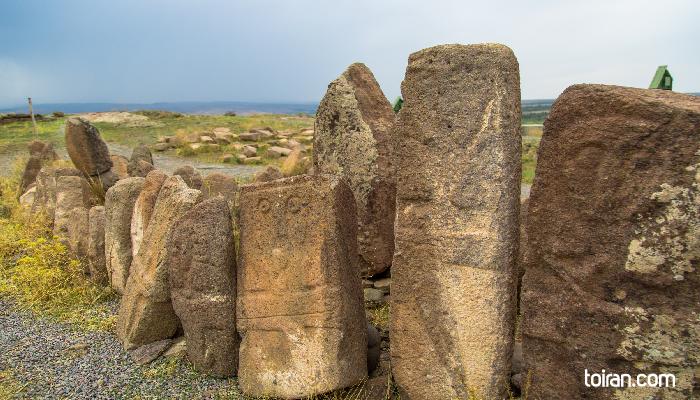Shahreyeri (Shahr-e Yeri) is an ancient site located 65 kilometers outside of the city of Ardabil and 31 kilometers from the city of Meshgin Shahr near Pirazmeyan Village. The area, which spans 400 hectares, consists of a military fortress, a temple and Qousha or Ghousha Tepe.
Shahreyeri was first excavated by archeologist Charles Allen Burney and his team in 1978. He believed the site dates back to the third millennium BC and the Early to Middle Bronze Age period. Other archeologists believe the site is at least 9 thousand years old.
What is known for certain is that Shahreyeri was inhabited and an important center of civilization before the 1st millennium BC and in the Neolithic period.
According to archeologists, the fortress and temple date back to 1450 BC. Qousha Tepe on the other hand is 7,000 years old and contains 450 graves. Approximately 100 of these graves have tombstones that are 40 centimeters to 2 meters tall and bear patterns that resemble human faces without mouths. Strong winds, storms and other natural factors have damaged these tombstones. Some 7 similar tombstones have been found in the Kurdistan region of Turkey and the Republic of Azerbaijan.
Shahreyeri has also yielded artifacts from the Iron Age as well as grey, orange and cream-colored pottery. Some of the items found in excavations of this ancient site are currently housed in the Archeology Museum of Khalkhal. Shahreyeri was registered as a National Heritage Site in 2002.

